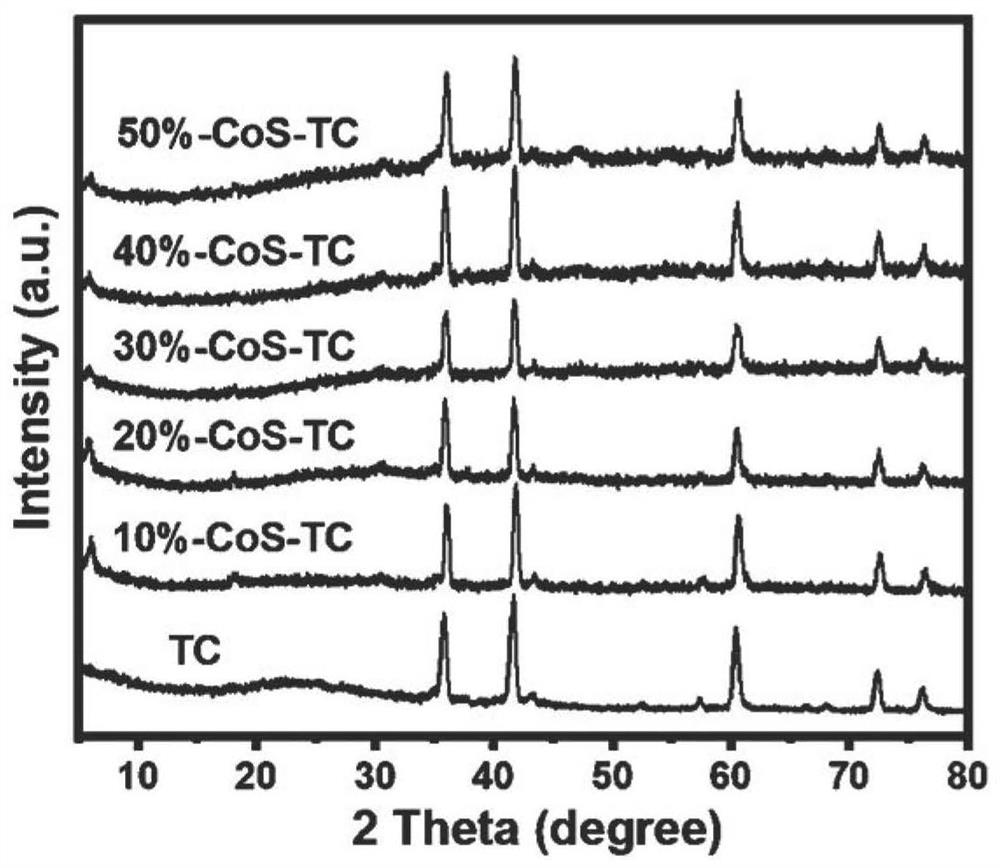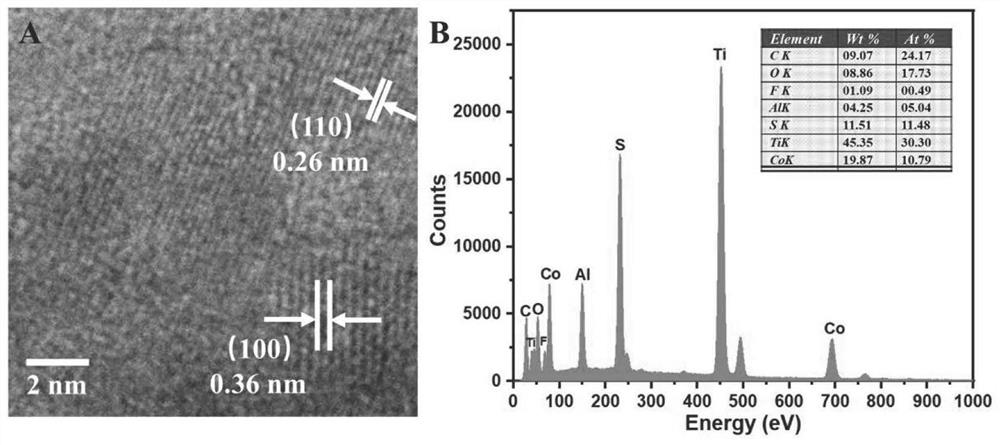Preparation and application of CoS/Ti3C2 MXene composite material
A technology of composite materials and nanocomposites, which is applied in the field of photo-Fenton-like catalysts, can solve problems such as low catalytic efficiency, achieve high-efficiency degradation, improve photoelectric performance, and promote dispersion
- Summary
- Abstract
- Description
- Claims
- Application Information
AI Technical Summary
Problems solved by technology
Method used
Image
Examples
Embodiment 1-5
[0047] Preparation of CoS / Ti 3 C 2 Composite material:
[0048] 200 mg of Ti prepared in advance 3 C 2 MXene was dissolved in 20 mL EG by ultrasonic for 2 h, and then 0.66 mmol CoCl was added. 2 ·6H 2 O was dispersed in 15 mL of EG, mixed with the previous solution, and stirred for 30 min to obtain solution A. 2.64mmol of thiourea was added to 10mL of EG and stirred for 30min to obtain solution B (CoCl 2 ·6H 2 The molar ratio of O to thiourea is 1:4). The solution A was slowly added to the solution B under stirring, and stirred for 30 min to make it evenly mixed. Subsequently, the homogeneous suspension was transferred to a 100 mL polytetrafluoroethylene-lined autoclave (Shanghai Yuezhong Co., Ltd.), reacted at 180 °C for 12 h, the reaction products were collected by centrifugation, washed three times with water and ethanol, respectively, and placed at 60 °C. ℃ and dried in a vacuum oven for 12h. The obtained product is CoS / Ti with a CoS mass fraction of 30% 3 C 2...
PUM
 Login to View More
Login to View More Abstract
Description
Claims
Application Information
 Login to View More
Login to View More - R&D
- Intellectual Property
- Life Sciences
- Materials
- Tech Scout
- Unparalleled Data Quality
- Higher Quality Content
- 60% Fewer Hallucinations
Browse by: Latest US Patents, China's latest patents, Technical Efficacy Thesaurus, Application Domain, Technology Topic, Popular Technical Reports.
© 2025 PatSnap. All rights reserved.Legal|Privacy policy|Modern Slavery Act Transparency Statement|Sitemap|About US| Contact US: help@patsnap.com



